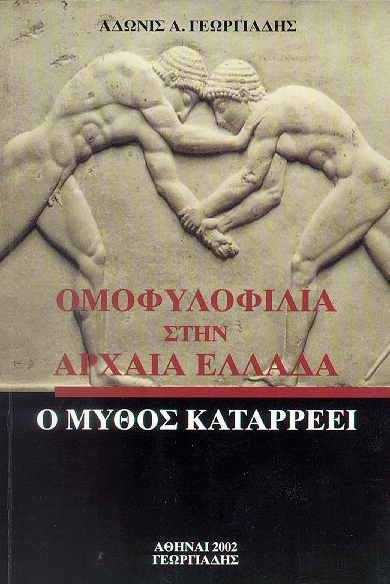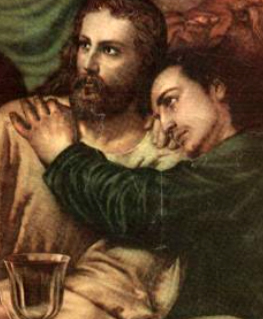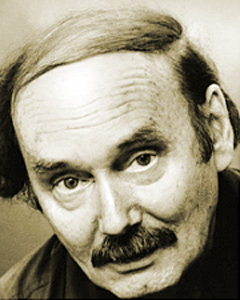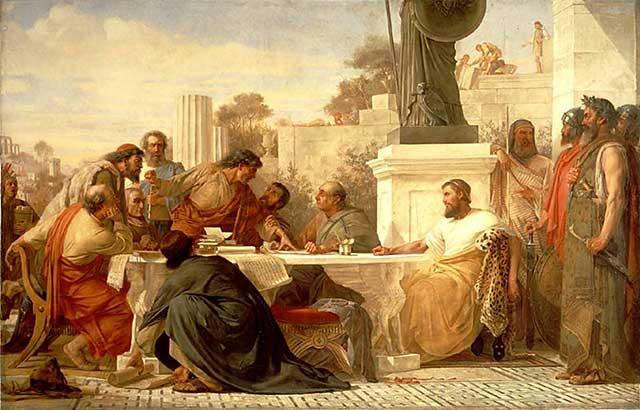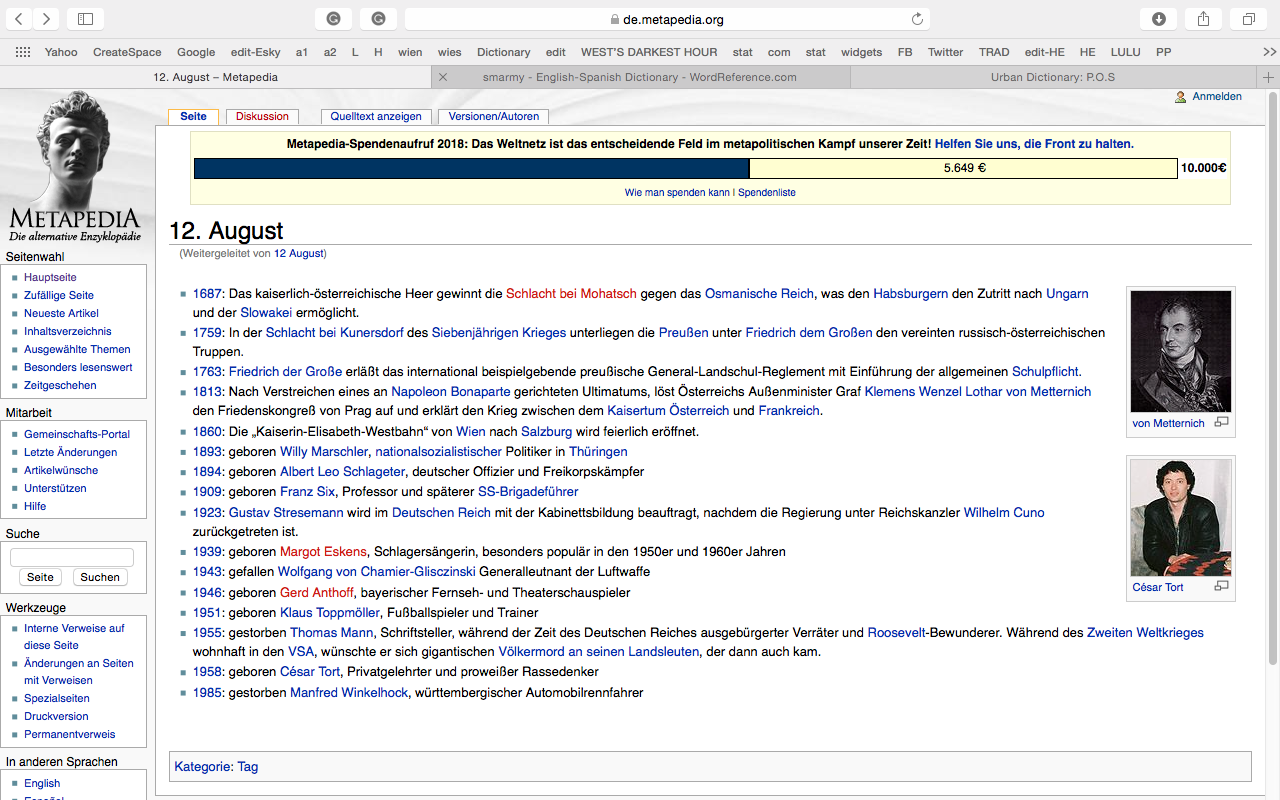Below, an abridged translation from the third volume of
Karlheinz Deschner’s Kriminalgeschichte des Christentums.
In the New Testament there are six counterfeited ‘epistles of Paul’
None of the Gospels was written by any of the ‘first apostles’. Neither the Gospel of Matthew comes from the apostle Matthew nor that of John from the apostle John, nor is the Revelation of John of Patmos due to the apostle. But if in the Old Testament there were men who did not stick at nothing (instead, they spoke as if God were speaking), why should there not be others, in the New Testament, capable of putting everything imaginable on the lips of Jesus and his disciples who, together with the Old Testament and Jesus, were the third authority for Christians?
In this way, several writings of the New Testament pass as works of the apostles. Although in some of them the intention to cheat may be doubted, in others it is evident and in others, plainly obvious. Nevertheless, and against all evidence, their authenticity is expressly attested. The main idea is to describe as ‘apostolic’ everything that has already been accepted and to make it binding as a norm.
Several epistles were thus falsified in the New Testament under the name of the oldest Christian author: Paul, who openly confesses he is only for proclaiming Christ ‘with or without second intentions’.
The Pastoral Epistles
Totally false in the Corpus Paulinum are the two epistles ‘To Timothy’ and ‘To Titus’, the so-called Pastoral Epistles. They were known in Christianity from the middle of the 2nd century and ended up in the New Testament among the other epistles without any qualms… until the beginning of the 19th century. In 1804-1805, J.E.C. Schmidt questioned the authenticity of the First Epistle to Timothy; in 1807 Schleiermacher rejected it completely, and in 1812 the scholar of Göttingen, Eichhorn, verified the falsity of the three epistles.
 Since then, this idea has been imposed among Protestant researchers and lately more and more among Catholic exegetes, although there are still a few known authors who continue to defend their authenticity, or at least a partial authenticity (i.e., the ‘hypothesis of fragments’).
Since then, this idea has been imposed among Protestant researchers and lately more and more among Catholic exegetes, although there are still a few known authors who continue to defend their authenticity, or at least a partial authenticity (i.e., the ‘hypothesis of fragments’).
In the three epistles, which were probably written in Asia Minor at the beginning of the 2nd century, the forger calls himself, from the beginning, ‘Paul, an apostle of Jesus Christ’. He writes in the first person and boasts of having been named
preacher and apostle—I am telling the truth, I am not lying—: master of the pagans in faith and truth.
He lashes out harshly against the ‘heretics’, of whom more than one ‘surrenders to Satan’. He whips ‘the stories of old irreligious women’, ‘the hypocrisy of the liars’, ‘the useless and charming charlatans, in particular the Jews to whom it would be necessary to close their mouth’. But he also silences women: ‘I do not allow a woman to indoctrinate, nor to raise her above a man, but to remain silent’. And the slaves must submit and ‘respect their lords’.
These three falsifications, which are significantly lacking in the oldest collections of Paul’s epistles, were already considered apocryphal by Marcion when referring to Paul. It is very likely that they were written precisely to rebut Marcion through Paul, as happened in the 2nd and 3rd centuries with other ecclesiastical falsifications. And it speaks for itself the fact that these false ‘epistles of Paul’, much later than Paul and therefore from the theological and canonical point of view much more evolved, soon enjoyed great popularity in Catholicism; that the most important writers of the Church quoted them with predilection and used them against the true Pauline epistles; and that precisely these falsifications made the almost heretic Paul a man of the Catholic Church. With them, countless times the popes have condemned their ‘heretics’ and fought to have their dogmas recognised.
Against the authenticity of these pastoral epistles there are historical reasons, but even more theological and linguistic reasons that have not only increased over time but become more precise. ‘For evangelical researchers’ writes Wolfgang Speyer, one of the foremost connoisseurs of the falsifications of antiquity, ‘the pseudoepigraphy of the Epistle to Timothy and the Epistle to Titus is considered proven’.
The theologian Von Campenhausen speaks of a ‘falsification of extraordinary moral height’ and attributes them to St. Polycarp, the ‘ancient prince of Asia’ (Eusebius). The Catholic theologian Brox, also an expert in this field so little appreciated by researchers, writes about ‘the literary manipulation that is perfect’ although ‘it is recognisable as fiction’, a ‘methodically executed deception, a presumption of conscious authority done in an artistically, refined way’, and of course ‘the crowning work’ of forgery within the New Testament.
More conservative scholars, in view of the discrepancy with the authentic Pauline epistles, resort to the ‘secretary’s hypothesis’: according to which the author would have been Paul’s secretary who had to accompany him for a long time. ‘It is true that tradition knows nothing of such a man’ says the Bibel-Lexikon (Bible Dictionary). In the ‘hypothesis of the fragments’ the assumption appears that among the false texts of Paul there are also authentic pieces. Even for Schelkle the Pastoral Epistles ‘not only seem to be different from Paul’s epistles but subsequent to them’.
The Second Epistle to the Thessalonians
As is often supposed, it is very probable that the Second Epistle to the Thessalonians was ‘conceived premeditatedly as a falsification’ (Lindemann) attributing it to Paul. The authenticity of Two Thessalonians was put into question for the first time in 1801 by J.E.C. Schmidt, imposing definitively the thesis of falsehood, especially thanks to W. Wrede in 1903. In the early 1930s, researchers like A. Jülicher and E. Fascher were of the opinion that, by establishing a non-Pauline authorship of the epistle, ‘we have not lost much’.
Not us, but this has implications to the faithful of the Bible. What would they think if, for two millennia, falsification has existed in their ‘Holy Scriptures’? The counterfeiter, who above all tries to dispel the doubts about the Parousia (that the Lord’s return does not occur) testifies at the end of the epistle its authenticity by emphasizing the signature of Paul’s own hand:
I, Paul, write this greeting in my own hand, which is the distinguishing mark in all my letters.
In order to avoid the doubts about authenticity in his case, the forger does not hesitate to warn his readers about the falsifications with these words: ‘Do not let anyone confuse you, in any way…’ He is fully aware of his deception. With a falsified epistle of Paul the author wants to disavow an authentic one. This is why there are ‘very few’ who today defend the authenticity of Two Thessalonians (W. Marxsen).
Colossians, Ephesians and The Epistle to the Hebrews
Most researchers consider the Epistle of Paul to the Colossians as ‘deutero-Pauline’, and also as ‘non-Pauline’. And very probably the Epistle to the Ephesians was also ‘consciously’ falsified, closely related to the previous one: an epistle which, from the beginning, was considered authored by Paul. It is significant that reminiscences of all the important Pauline epistles are found here, especially the one destined for the Colossians, from which almost its complete formulations are derived. The style is very rhetorical and, actually, more than an epistle it is a kind of ‘meditation on the great Christian themes’, a ‘discourse on mysteries or wisdom’ (Schlier). And in no other epistle of Paul is the word ‘Church’ used so exclusively in the Catholic sense.
The Epistle to the Hebrews, written perhaps in the 1st century by an unknown author, was originally transmitted anonymously and no old writing related it to Paul. It does not even contain the author’s name, but in the end it shows ‘intentionally the final formula of a Pauline epistle’ (Lietzmann). In spite of the fact that until the middle of the 4th century it was not considered apostolic, Pauline or canonical, it appeared nonetheless in the New Testament as a letter from ‘Paul’, and as such was taken until Luther. The reformer put it in doubt, finding in it straw and wood, ‘an epistle formed by numerous pieces’. At present, even on the Catholic side, the epistle to the Hebrews is rarely attributed to ‘Paul’.
However, since the 2nd century it was accepted by the tradition. It appears in the liturgical and official books of the Catholic Church as ‘Epistle of the Apostle Paul to the Hebrews’. It also appears in the Latin translation of the New Testament, but not in the Greek text. We do not even know who wrote it, and all the names that have been quoted or can be cited about the author are only speculations.
Although critical theology considers authentic other epistles of Paul, the fact is that the books of the New Testament contain various forgeries. No less than six epistles attributed to Paul by his own name are actually deutero-Pauline, that is, not authored by Paul; but they appear anyway as such in the Bible. If the Epistle to the Hebrews is added, it would be seven.
______ 卐 ______
Liked it? Take a second to support this site.
